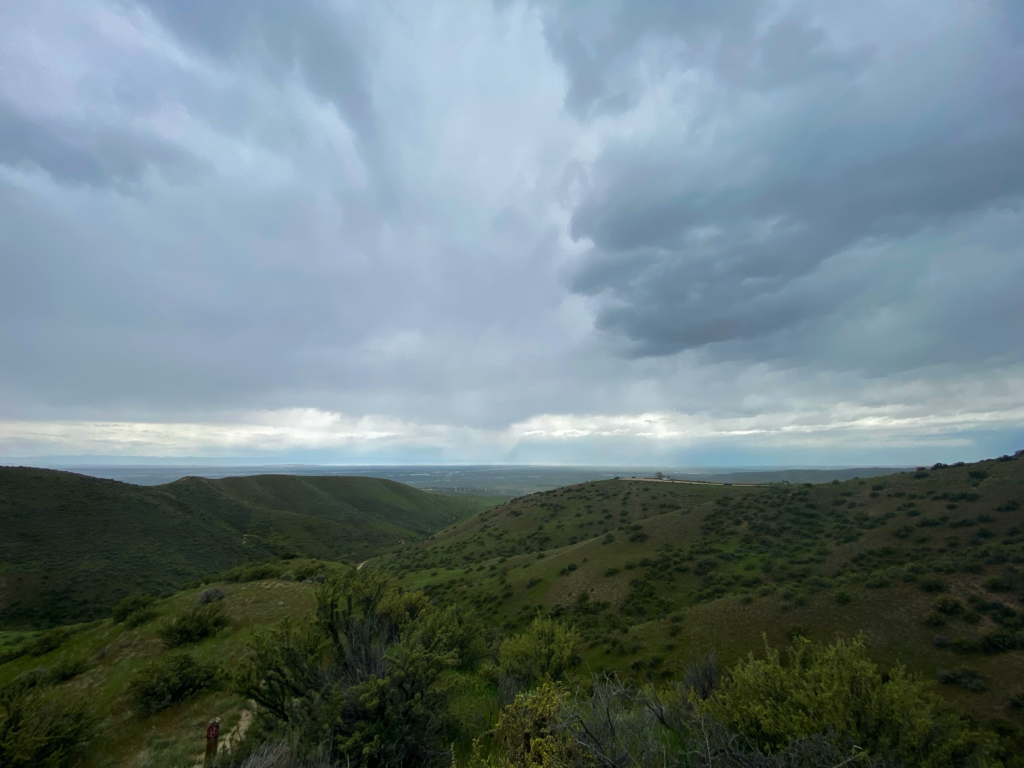Word on the Street Issue 23, July 2022

By Erin Sheridan
The Treasure Valley’s housing crisis has created a growing number of encampments on public lands, Boise State Public Radio reported in June. Officials with the Bureau of Land Management last month estimated a total of 40 to 50 camps on the public lands they manage in the Treasure Valley, according to staff at Interfaith Sanctuary Housing Services, who joined a call with BLM officials and homeless service providers to discuss how to connect those living on public lands to resources.
One reason families experiencing homelessness in the Treasure Valley live in their vehicles or are drawn to public lands is that access to the shelter system is limited. On top of the fact that family beds are in short supply, the shelter system frequently asks families to separate and provides limited space to store belongings or vehicles.
In Boise, there are two private shelter systems. At the Boise Rescue Mission, which is registered as a church, women with children stay at one shelter. Boys over the age of 12 cannot stay there. BRM’s men’s shelter serves people who are on the sex offender registry, so single fathers with children cannot stay. Interfaith Sanctuary, a nonprofit which currently operates a hotel shelter for families and does not require them to separate, has a waitlist roughly 180 families long. The Boise City Council asked Interfaith Sanctuary to reduce the bed count for its planned shelter on State Street after a group of home and business owners fought the relocation.
The lack of access to the system generally relegates families into situations where they have to move frequently. In the city of Boise, people living in their cars must relocate every 72 hours to avoid ticketing. On BLM lands, anyone can camp in one spot for 14 days. After, they must move at least 25 miles or face ticketing. BLM officials told Interfaith staff they’ve been helping families struggling to find housing navigate this rule. Issuing tickets criminalizes people experiencing homelessness and overburdens the federal court system with defendants who often don’t have the means to get to the courthouse, they said.
Officials told service providers that the camp conditions vary. Some of the families have trailers and functional vehicles while others live in tents. One BLM official told providers that a woman gave birth in a trailer on public lands near the Boise area this winter. Another woman living in a tent with her family is now in assisted care after frostbite forced doctors to amputate two of her feet. Her family is still living on public lands, officials said.
Public lands are a temporary solution for families with nowhere else to go. In the Boise area, these lands tend to lack bathroom facilities and dumpsters, creating health hazards for both people living in the camps and the visiting public. But Jodi Peterson-Stigers, Interfaith Sanctuary’s executive director, said the best option for everyone involved is to help people camping on public lands live with dignity instead of displacing them from sight. People experiencing homelessness face yearslong waits to access affordable housing in the Treasure Valley. Helping those individuals to camp safely in the meantime not only keeps people safe, but also makes it easier for service providers to engage, which builds trust and community ties.
“We legitimately don’t have a place to move people to right now, so they’re in their cars or out on land. There isn’t a quick fix. If it’s about protection of the rivers and the land, you create the system that protects the people, the rivers, and the land. That means outhouses, dumpsters, volunteers, and bringing supportive services out to these people,” Peterson-Stigers said.
“Eventually, the stabilization allows them to start being more self-sufficient. But when all they are is criminalized, harassed, and forced to move, there’s no stabilization, no reduction of trauma, and no one gets better.”
